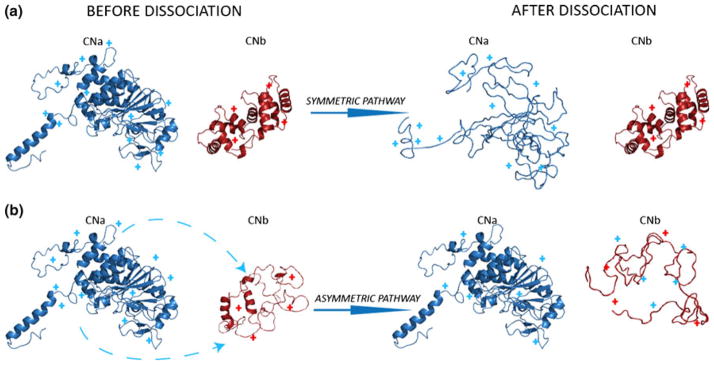Figure 5.

Mechanistic scheme representing the collision induced charge partitioning and dissociation pathways of the CNt heterodimer. Blue and red represent CNa and CNb subunits, respectively. For clarity, their structures are represented as individual components also prior to dissociation. (a) Symmetric charge partitioning pathway. Preceding activation CNa and CNb both remain in their native structure. During dissociation CNa partially unfolds while the structure of CNb is largely unaffected. In this scenario, there is insignificant charge relocation and thus after dissociation the charges are separated equally according to the mass of the individual subunits. (b) Asymmetric dissociation pathway. CNa remains largely in its native structure, while CNb adopts an extended conformation whereby charges are relocated from the CNa to the CNb subunit. After collisional activation CNb is fully unfolded and highly charged. The CNa fragment retains its more native like conformation
